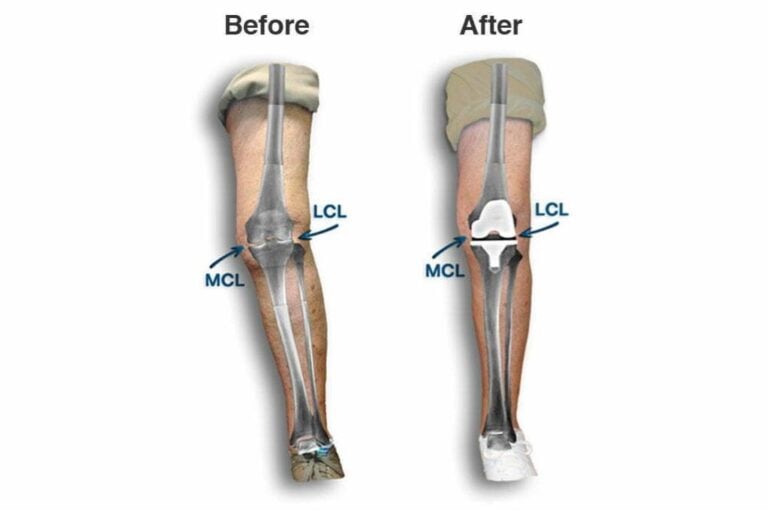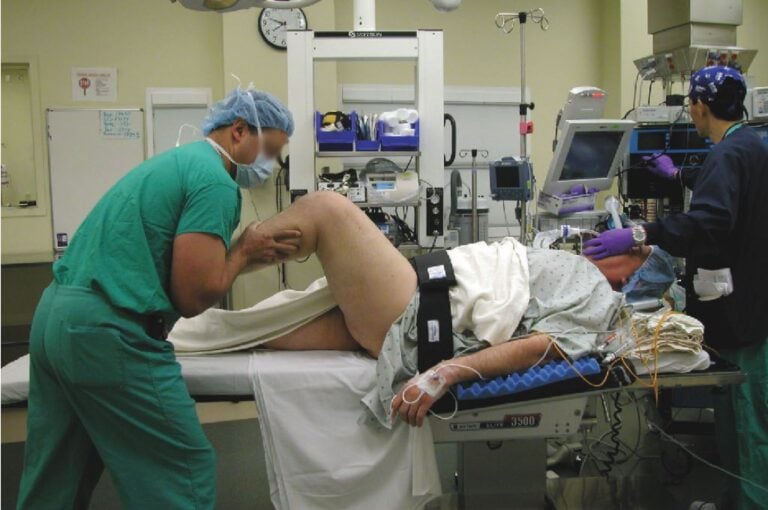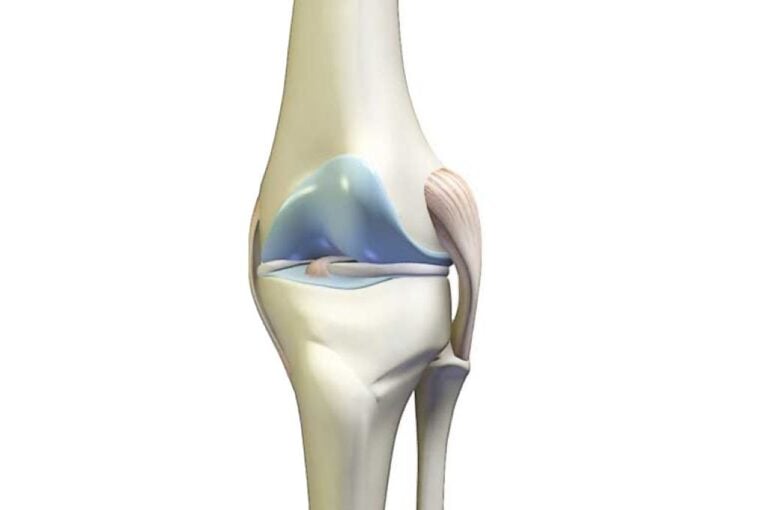Although there are several conditions which may lead to the need for knee replacement, arthritis (whether it be osteoarthritis, rheumatoid arthritis or traumatic arthritis) is the most common reason. A number of other factors contribute to joint disease including genetics, developmental abnormalities, repetitive injuries and obesity.

The knee joint is the largest and most complex and therefore the most stressed joint in the body. It is this complexity and stress which can cause arthritis. Knee replacement surgery – whether total or partial – is an effective treatment for degenerative arthritis in the knee joint.
Arthritis affects over 40 million people in the US, over 10 million in the UK and tens of millions more worldwide.
Why do people have knee replacement surgery?
For the majority of people who have knee replacement surgery, the procedure results in:
- a decrease in pain
- increased mobility
- improvements in activities of daily living
- improved quality of life.
Types of Arthritis that May Lead to Knee Replacement
Osteoarthritis occurs when cartilage on the gliding surface of the knee begins wearing away, causing pain and stiffness. When the cartilage wears away completely, the bones rub directly against each other causing decreased mobility and chronic pain. Osteoarthritis is most common in people 50 and older, but is also prevalent in those with a family history of arthritis or those with lifestyles that stress the joints, such as athletes and laborers.
Rheumatoid arthritis is actually an autoimmune disease in which the body’s immune system begins to attack the synovial membrane causing it to become inflamed and overproduce synovial fluid (the fluid that lubricates your joints). More importantly, the process also causes damage and wear to the articular cartilage.
Traumatic arthritis results from a serious knee injury, such as a fracture, ligament damage or meniscus tear. The impact of the accident also causes mini trauma to the articular cartilage which over time, develops into osteoarthritis, causing knee pain and stiffness.
Knee degeneration can also be caused by a condition referred to as avascular necrosis or AVN (the proper medical name is actually osteochondritis dessicans or osteochondritis juvelanis). Mostly seen in young adults and adolescents, AVN occurs in patches on the articular surface, primarily on the femoral condyles (the rounded protrusions at the end of the femur). The bone becomes soft and loses cohesion with the main bone, even to the extent where fragments can separate and become loose bodies within the joint. These fragments can vary from very small to large fragments which result in instability, pain and even joint locking. Some treatment can be applied to resolve the individual patches though generally the condition subsides as the patient matures into adulthood. However, where large areas have been affected, arthritic changes are not uncommon in any age from late teens to old age.
Abnormal formation or alignment of the knee can also create high stress on the joint, resulting in degeneration. This misalignment – sometimes referred to colloquially as knock-knees or bowlegged – creates an unnatural angle between the femur and tibia at the knee joint. After a substantial period of time, the cartilage will eventually and unevenly wear away.






